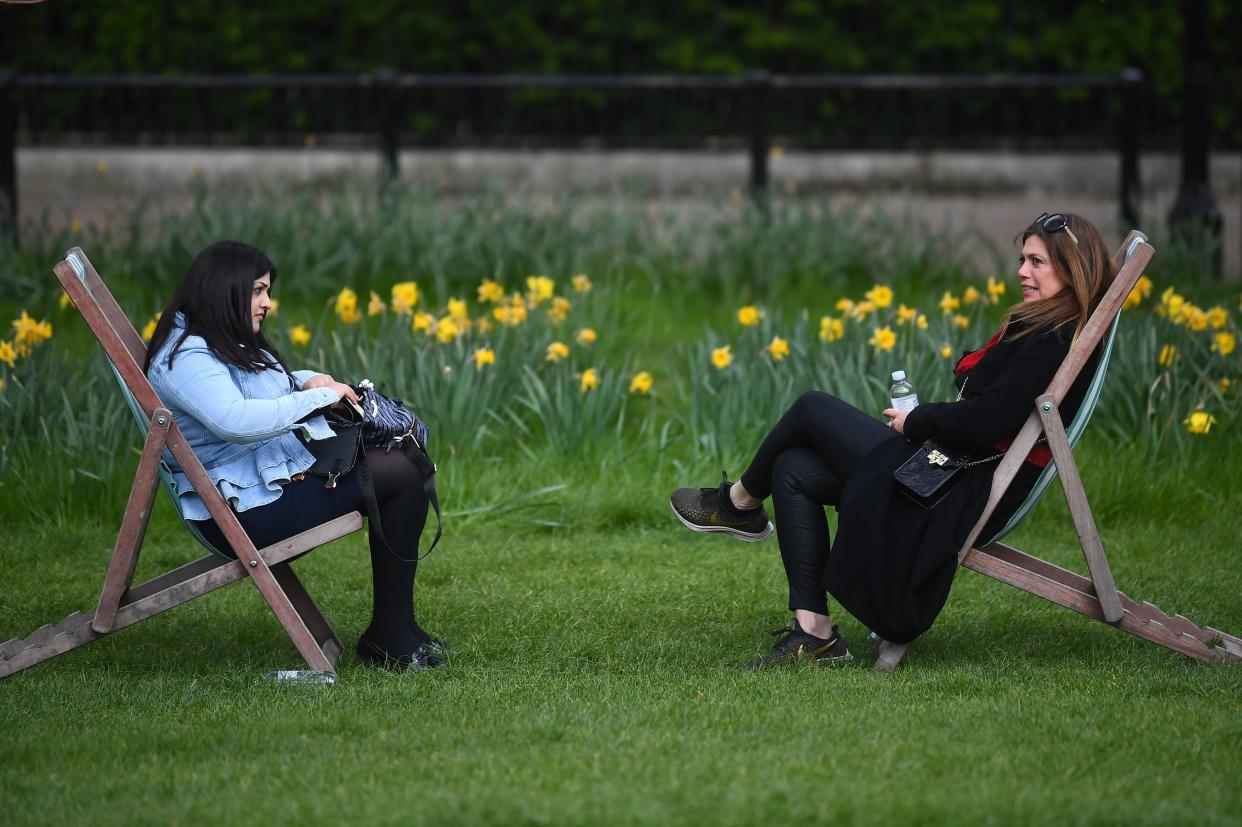Covid: Keep ‘garlic-breath distance’ from friends to stop transmission, says expert

Two women sitting in deck chairs in Green Park, London, after Covid rules were relaxed this week
(PA)Maintaining enough distance from friends that you are unable to smell what they had for lunch – dubbed the “garlic breath” test – is the best way of preventing Covid transmission as people start meeting again following months of lockdown, an expert has said.
Dr Julian Tang, author of a new study published in the British Medical Journal that urges governments and health leaders to “focus their efforts on airborne transmission”, encouraged people to assess the “garlic-breath distance” to calculate whether someone is close enough to another person for coronavirus transmission to occur.
The consultant virologist at the Leicester Royal Infirmary said the focus should be on airborne transmission rather than touching contaminated surfaces.
Appearing on Sky News he was asked if a previous focus on hand washing and sanitising was “wrong”.
Dr Tang replied: “I think the emphasis is wrong. So the message 'hands, face, space', we think should be really 'space, space, hands'.
”The way this virus transmits is really through conversational distance, within one metre.”

He added: “When you're talking to a friend or sharing the same air as you're listening to your friend talking, we call it the garlic-breath distance.
”So if you can smell your friend's lunch you're inhaling some of that air as well as any virus that's inhaled with it.
“And this is why we say that masking is fine, social distancing is fine, but the indoor airborne environment needs to be improved and that can be done with ventilation.”
Writing in the BMJ, Dr Tang said: “Wearing masks, keeping your distance, and reducing indoor occupancy all impede the usual routes of transmission, whether through direct contact with surfaces or droplets, or from inhaling aerosols.
“One crucial difference, however, is the need for added emphasis on ventilation because the tiniest suspended particles can remain airborne for hours, and these constitute an important route of transmission.
“It is now clear that SARS-CoV-2 transmits mostly between people at close range through inhalation. This does not mean that transmission through contact with surfaces or that the longer range airborne route does not occur, but these routes of transmission are less important during brief everyday interactions over the usual one metre conversational distance.
“In close range situations, people are much more likely to be exposed to the virus by inhaling it than by having it fly through the air in large droplets to land on their eyes, nostrils, or lips.
“The transmission of SARS-CoV-2 after touching surfaces is now considered to be relatively minimal.”
Read More
Trudeau claims UK is facing ‘very serious’ third Covid wave
Covid far more likely to cause rare clot than AstraZeneca vaccine
Fears for cancer care as Labour warns 330,000 people seen late by NHS

